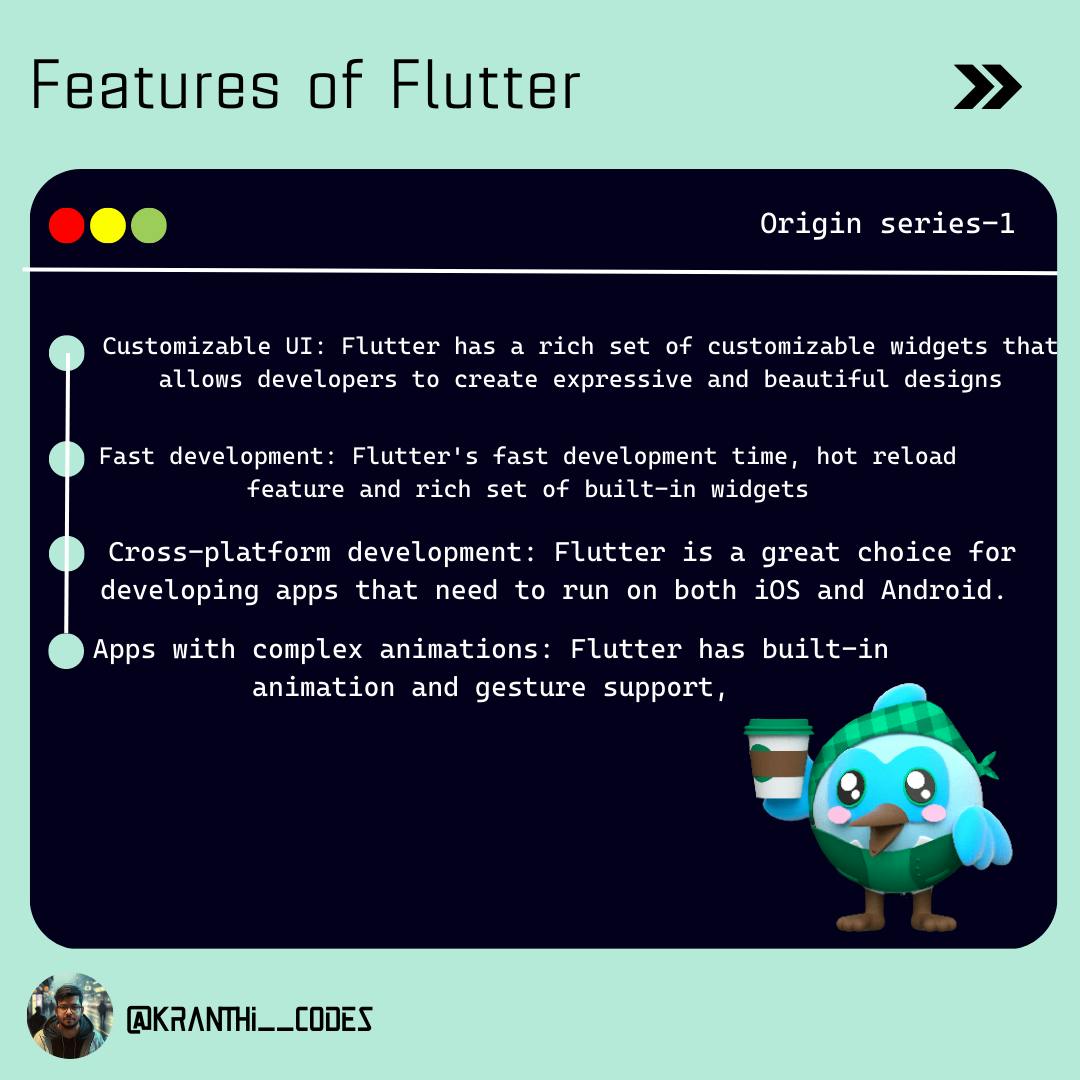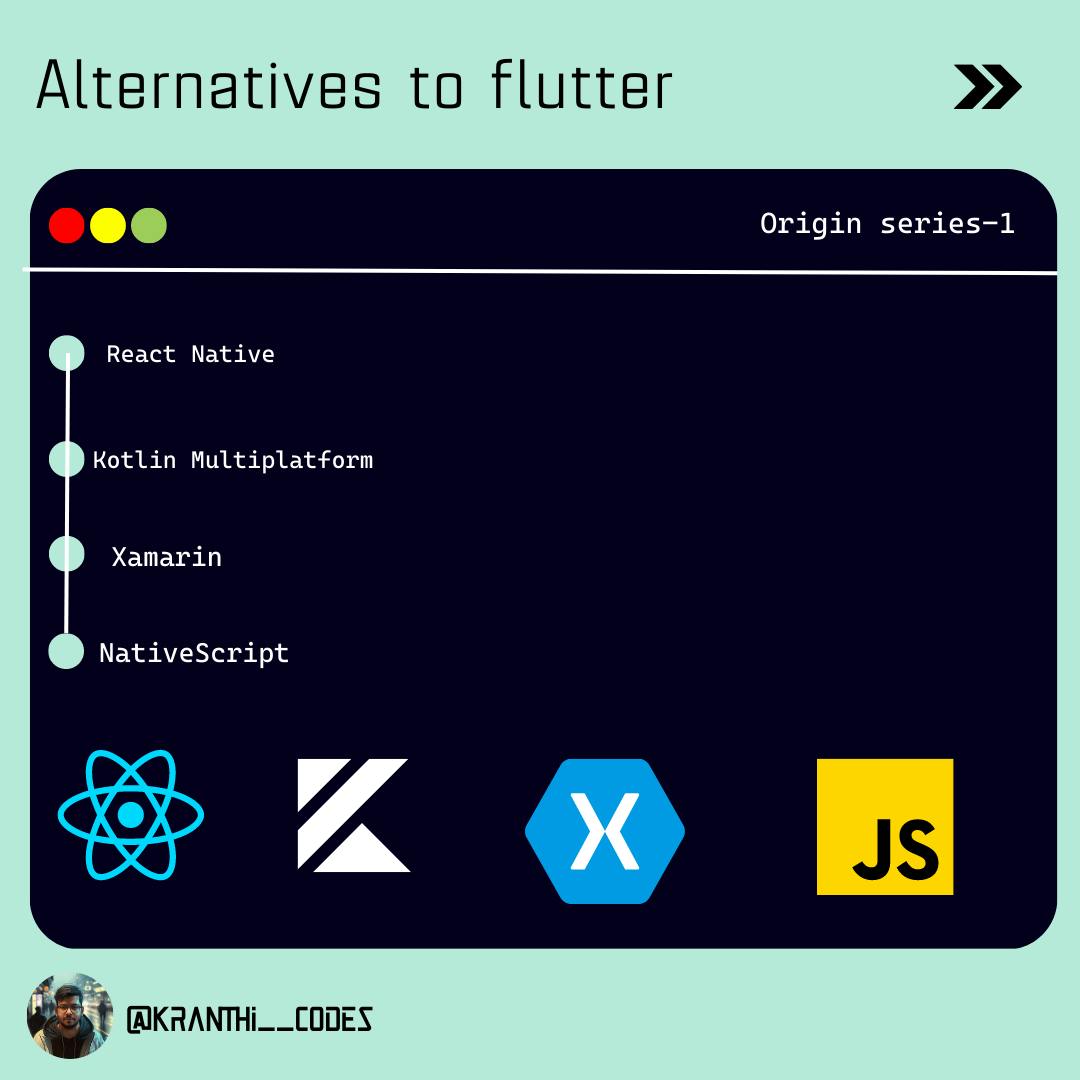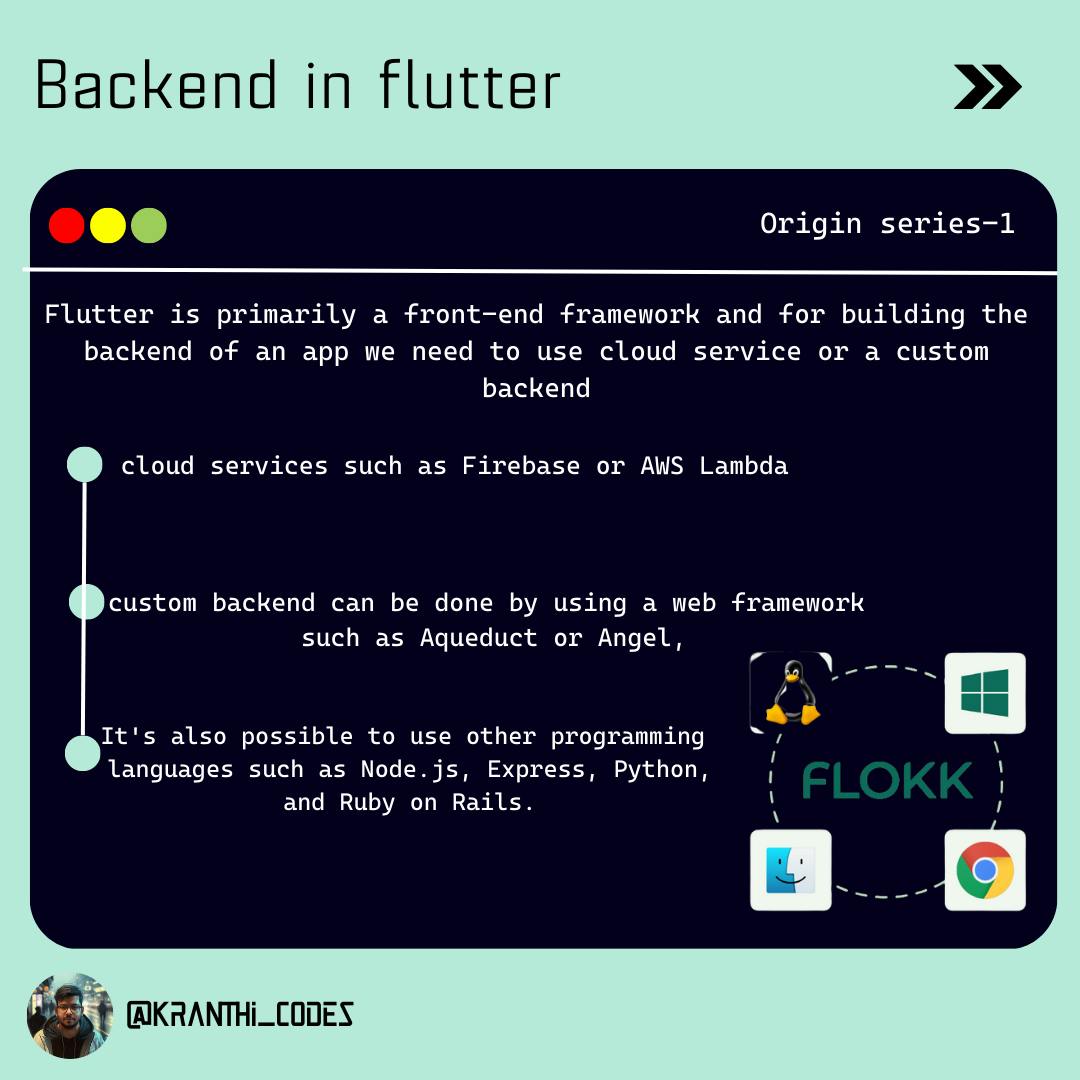what is flutter?
Want to create visually stunning mobile apps? Look no further than #Flutter!
This trendy framework has been widely adopted by top companies and developers to build high-performing, expressive and beautiful apps.
Google's Flutter is a cross-platform mobile application development framework. It's used to make apps for Android, iOS, Windows, Mac, Linux, Google Fuchsia, and the web. Flutter is open-source and free. It was created in December 2018 by Lars Bak and Oscar Carlsson at Google. The project was announced in February 2019 during the Dart Developer Summit.
Flutter is a lightweight, expressive, and portable user interface framework. It has a large collection of Material Design and Cupertino widgets, and developers can create their own. Flutter comes with a reactive architecture that allows you to update your user interface without having to rebuild your project.

Features of flutter
Customizable UI: Flutter has a rich set of customizable widgets that allows developers to create expressive and beautiful designs.
Fast development: Flutter's fast development time, hot reload feature and rich set of built-in widgets.
Cross-platform development: Flutter is a great choice for developing apps that need to run on both iOS and Android.
Apps with complex animations: Flutter has built-in animation and gesture support,
Features of Flutter.

Alternatives to flutter
When it comes to mobile app development, there are a few popular alternatives to Flutter that are worth considering. Here are a few:
React Native: Developed by Facebook, React Native is a popular framework for developing JavaScript-based mobile apps. It enables developers to use the same codebase for both Android and iOS, saving time. React Native also features a huge and active community, so developers may access a wealth of information and assistance online.
Xamarin: Xamarin is a mobile app development framework that allows developers to leverage C# and the.NET framework. It is an excellent solution for developers who are otherwise familiar with these technologies because it allows code to be shared across various platforms. Xamarin also offers a huge and active community, so developers may discover a wealth of information and assistance online.
Ionic: Ionic is an open-source framework for developing mobile apps utilizing web technologies including HTML, CSS, and JavaScript. It enables developers to construct programs that operate across various platforms from a single codebase. Ionic also has a huge and active community, so developers may find a wealth of information and assistance online.
PhoneGap: PhoneGap is a mobile app development framework that uses web technologies such as HTML, CSS, and JavaScript. It enables developers to construct programs that operate across various platforms from a single codebase. PhoneGap is an Adobe product that is developed on top of Apache Cordova.
NativeScript: NativeScript is an open-source framework for creating JavaScript-based mobile apps. It enables developers to use the same codebase for both Android and iOS, as well as access each platform's native APIs.
NativeScript also has a huge and active community, so developers may find a wealth of tools and assistance online.
These are just a few examples of popular Flutter alternatives.
Finally, the framework you choose will be determined by your individual needs, development experience, and accessible resources.

Backend in flutter
In Flutter, a backend is the server side of an application that handles data storage, business logic, and communication with other systems.
There are various ways to implement a backend in a Flutter application. One common approach is to use Google's Firebase, which is a mobile and web application development platform. Firebase provides a number of features that may be easily linked into a Flutter app, including authentication, data storage, and hosting.
A standard backend development stack, such as Node.js, Ruby on Rails, or Python, is another alternative. This can be accomplished by developing a RESTful API with which the Flutter app can communicate via HTTP queries. This method provides greater flexibility and control over the backend, but it also necessitates additional setup and upkeep.
Alternatively, you can set up the backend infrastructure using a Backend as a Service (BaaS) provider such as AWS, Google Cloud, or Microsoft Azure. Finally, the backend you choose will be determined by your individual requirements, programming skills, and accessible resources.

Conclusion
Flutter is a powerful and versatile framework for building mobile apps. It allows developers to create high-performance, visually stunning apps that can run on both Android and iOS. Flutter's widgets system and built-in support for animations, gestures, and material design make it easy to create visually appealing apps.
However, like any framework, Flutter has its own set of limitations and may not be the best fit for every project.
In this blog, we've covered the basics of what Flutter is, how it works, and some of its key features. We've also discussed some popular alternatives to Flutter for building mobile apps. By understanding the strengths and limitations of this framework, you can make an informed decision about whether it's the right fit for your next mobile app development project.
As always, thank you for reading, and please leave a comment if you have any questions or feedback about this post.
